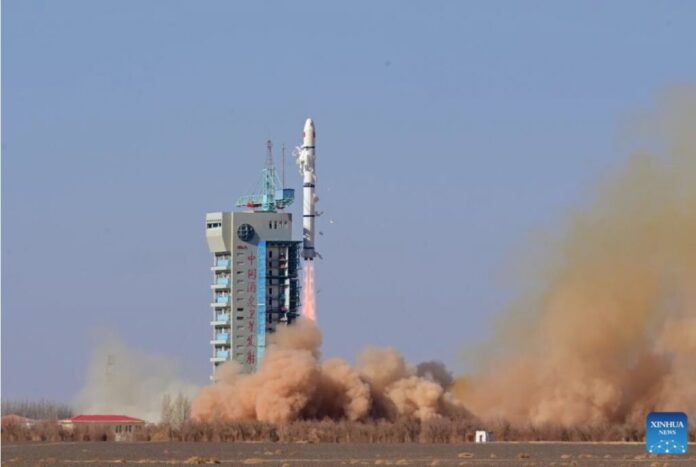
The Egyptian Space Agency (EgSA) CEO, Prof Sherif Sedky, announced that Egypt had added another Earth observation (EO) satellite to its fleet after successfully launching the Horus-1 satellite into the sun-synchronous polar orbit. Horus-1 was onboard China’s Long March 2C (Chang Zheng 2C), launched successfully on 24 February 2023 from the SLS-2 pad at the Jiuquan Satellite Launch Center in the Gobi Desert.
Prof Sedky disclosed this during an interview with Channel One, a local channel in Egypt. He said the satellite was built under strategic cooperation between Egypt and China. The partnership saw engineers from DFH Aerospace, a division of the China Academy of Launch Vehicle Technology (CAST) specialising in small satellites collaborating with Egyptian engineers to design and assemble the remote-sensing satellite.
Furthermore, the mission patch design suggested that it was built under the “One Belt One Road Initiative,” an initiative to build infrastructure and trade links throughout Asia, Europe, Africa, and other regions.
Prof Sedky also noted that Horus-1 is the first of a long line of remote-sensing satellites under development by Egyptian engineers with full support from their Chinese counterparts to enhance the local satellite development capabilities of the North African nation.
Horus-1 satellite carries a high-resolution imaging camera, making it the perfect fit for enhancing sustainable development and resource management, as highlighted under Egypt’s vision 2030. In addition, Horus-1 is expected to produce critical data to enhance Egypt’s agricultural sector by improving productivity and limiting wastage. Similarly, the satellite will produce imagery to help monitor all water sources, help predict natural disasters, and monitor encroachments on state-owned land and violations such as narcotic cultivation.



